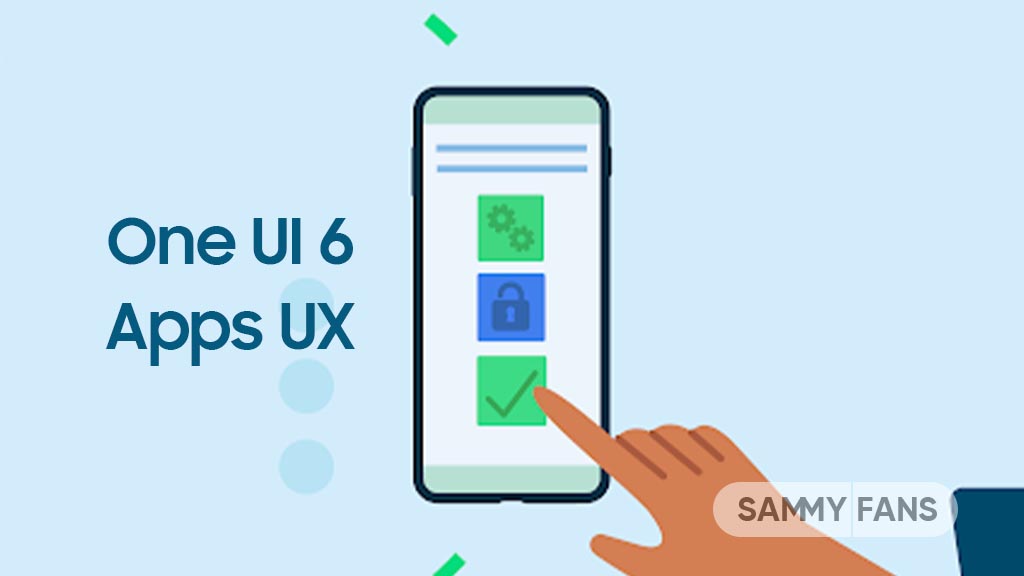Opinion
As it wishes, Samsung will become unbeatable!

Samsung is one of the biggest conglomerates on the planet. Mobile phones and home appliances are some of the key areas where Samsung is involved and leading the worldwide market. In the recent past, the company has been facing fierce competition from Apple and China, but, some recent decisions suggest, Samsung will become unbeatable!
Apple and Samsung are the biggest players in the worldwide smartphone market, and both keep the crown of leaders in their own fields. Apple made its own world where no competitor can enter, while, there’s a huge crowd when it comes to the Android market.
Up from Apple, Samsung leads a fiercely competitive Android smartphone market, where it has a big number of rivals including Google itself. The company is still leading the global market, but, the shipments and business is getting down due to some mistakes it did over the recent years.
Since Lee took charge as legal Samsung Boss, we are seeing big, bold, and striking decisions coming. The first move that impressed us is the Snapdragon processor exclusivity for Galaxy flagships, while, the most recent one mangled our mind!
Processor matters the most
Flagship Galaxies maintained a multi-processor strategy due to which Samsung shipped smartphones with Snapdragon chipset in just a handful of markets including the United States and China. And the remaining parts of the world including Europe received the same devices with Samsung’s own made Exynos processors.
Most of the time, Samsung consumers complained that the Snapdragon variant performs significantly well compared to the Exynos one. In the meantime, Samsung rivals such as Xiaomi and OnePlus gradually entered new markets, leaving China exclusivity and started shipping low-cost devices with powerful specs.
Chinese vendors have not yet managed to rival Samsung in markets such as the US and Europe, but greatly ate the share. They started to become Samsung alternatives due to processor issues along with pricey Galaxy flagships with their so-called flagship killers.
Seeing a bad impact, the South Korean tech giant extended the Snapdragon variant’s markets, which recorded better results. With the Galaxy S22 series, Samsung used 75% Snapdragon 8 Gen 1 chips and shipped in new markets including India, while the remaining 25% models were shipped with Exynos 2200.
However, the Galaxy S23 series is going to be solely shipped with Qualcomm chipsets as Samsung signed a multi-year partnership with the biggest chip designer. Due to yield issues in Samsung Foundry, the 8 Gen 2 chipsets are being fabricated by Taiwanese TSMC.
If recent reports are current, Samsung has decided to make Exynos a brand dedicated to automotive electronics and wearables. Moreover, the Mobile Experience Division formed a team in order to design a tailor-made chipset for Galaxy devices, which could debut in 2025.
Price reduction hurts
Keeping Android rivals aside, Samsung has recently decided to think like Apple to beat Apple. The world criticizes Apple for settings new records for overpriced iPhones, but, the Korean phone maker is likely to be doing the same from now on to make the future better and become unbeatable.
Due to the entry of Chinese phone makers, Samsung somewhat compromised with the hardware elements of its flagship phones for price reduction. This made the Ultra variant real flagship, while the other models became comparable to premium models of the Galaxy A series.
During its 3-day global meeting to discuss business strategies for 2023, Samsung reportedly determined to avoid cost reduction and maximize Galaxy user experiences. As Apple focuses only on the premium smartphone market, the Galaxy maker would now target this section along with regaining the trust of consumers.
Samsung’s now on the right path?
Killing the Galaxy Note series, Samsung brought the Galaxy Z Fold and Flip lines into its mainstream. So far, the company debuted a number of foldable devices with pretty great specs and designs but failed to attract consumers of premium smartphones.
To lessen the heat of China-based phone makers, Samsung hardly focused on the Galaxy A and Galaxy M series smartphones in markets like India and Europe. Due to continuous cost reduction, the company gradually lessened its trust in consumers, in various parts of the planet.
When it comes to privacy and data safety, Samsung never compromises, but Chinese phone makers might?! Key markets such as the US, European region and India where Samsung is apparently losing its dominance are the areas to work and retain the identity of being unbeatable.
Things are getting better and better, and we hope, there will be bold decisions in the back end so Samsung products, specifically mobile phones would become invincible Android machines. We hope Samsung will keep evolving and become an ultimately unbeatable smartphone vendor on the planet.

Opinion
7 Android updates Sweet but Useless for Galaxy Z Flip 6, Z Fold 6

Samsung replicated Google’s promise of Android updates, but the plus point is that mid-range and budget Galaxy phones are eligible for at least four major OS upgrades. The upcoming Galaxy Z Flip 6 and Z Fold 6 will also be honored with 7 major Android updates.
The Korean tech giant offers the longest software update support in the Android industry. Google’s OS update promise starts from the Pixel 8 series. While mid-range and budget Samsung phones get four Android updates, the premium Galaxy Z Flip 6 and Z Fold 6 will get 7.
Earlier this year, Samsung launched the Galaxy S24 series smartphones. The lineup is guaranteed for at least seven OS upgrades. The strategy was earlier expected to be applied to Galaxy A55, but the company kept it limited to the flagship phones.
Samsung doesn’t officially consider Galaxy Z as flagship lineup, but it’s the most premium segment. All the novelties that Galaxy S receives also come to foldable phones. Therefore, it’s certain that the company will support its upcoming Galaxy Z phones for 7 years.
Will they survive 7 years?
Sporting a foldable display entirely ends the discussion of longevity. Besides, the pre-applied screen protection film starts to damage within a year of normal usage. Samsung’s innovative foldables are available internationally but support isn’t.
Samsung Care+ plan is also offered by the phone maker for additional protection. However, it still requires the owner to pay the processing fee, which isn’t considerable. Also, the Care+ plan doesn’t cover the Samsung-slapped screen protector film.
So if the Korean phone maker is willing for longer software support, it should rather offer a two-year replacement guarantee on manufacture defects. It would push consumers to prefer foldable phones as they won’t have to worry about display concerns.

Pre-reserve the next Galaxy and get a $50 Samsung Credit and massive savings. When you pre-order any of the upcoming devices, you will be honored with multiple benefits. You will not only get Instant Samsung Credit but also savings of up to $1500.
Unpacked 2024 ‘Pre-reserve’ ends soon, secure your $50 Samsung Credit
Opinion
Android Updates War: Google’s Game-Changing Move to Outshine Samsung

When it comes to Android updates, Samsung is leading the Android world. However, this could be the last day of Samsung’s leadership as Google is expected to double up its current Android updates support for Pixel smartphones launching today.
2020 was a remarkable year in Samsung’s history when the company extended Android updates support from two years to three. A few months later, the company extended the security support as well, totaling it to four years for flagship Galaxy devices.
Follow our socials → Google News | Telegram | X/Twitter | Facebook | WhatsApp
In 2022, Samsung launched the Galaxy S22 series, which offers four generations of OS upgrades. In its announcement, the company listed all flagships launched in 2021 and later along with select Galaxy A series smartphones for 4 OS and 5 years of security patches.
With this decision, the South Korean tech giant surpassed Google’s support policy, which owns Android. To be noted, Tensor-powered Pixel smartphones come with three years of Android and five years of monthly security updates support.
Today, Google will launch the Pixel 8 and Pixel 8 Pro smartphones. And as per the leaks, both phones will offer up to 7 years of software support, surpassing the longest support provided by Apple to its iPhones. Pixel 8 and later might be eligible for 7 major OS upgrades, which sounds a bit confusing.
There are speculations that there will be five major OS versions and 7 years of regular security patches and quarterly Pixel Feature Drops for the latest flagship smartphones. If it happens, it will force other Android vendors to further extend their support.
While Pixel phones are limited to support 3 major OS versions, Samsung is offering 4 generations of OS upgrades to cheaper Galaxy devices that costs approx $249. Samsung won’t take too long to beat Google yet again in terms of software support.
Let’s see, what Google has to offer to the Android world!
Opinion
Here’s why Samsung apps start getting One UI 6 support ahead of official release

After One UI 5.1, we started hearing a lot of news, leaks, and rumors about the upcoming One UI 6. Recently, Samsung has also started releasing One UI 6.0 support for stock apps, starting with the Calculator app.
Looking at all this, we can expect that Samsung will provide this support to more apps in the future too. But the question is, why is Samsung providing One UI 6.0 support to its stocks apps before the official release? If you are thinking that by getting their support, you will get some new features in your apps, then it is not only the reason.
Samsung One UI 6.0 support can also bring new features for apps, but the main reason for this is something else. But what? The answer is that Samsung is going to release a new One UI update in the coming weeks or months and the company aims to make its stock apps compatible with that accordingly. Once the app is supported, the app will not stop working or get crash whenever the company releases that update for the smartphone.

A recent report revealed that Samsung’s stable Android 14 update will be available in October. This is the same time frame as last year’s UI rollout, with the latest Galaxy S lineup being the first to secure it. Meanwhile, beta activity is seeing an early start if everything goes as planned by the internals.
Still, for the time being, we can consider this information as a pinch of salt as the company has not yet announced any official timeline for One UI 6.0.
Samsung confirms One UI 6 and Good Lock features finding underway










